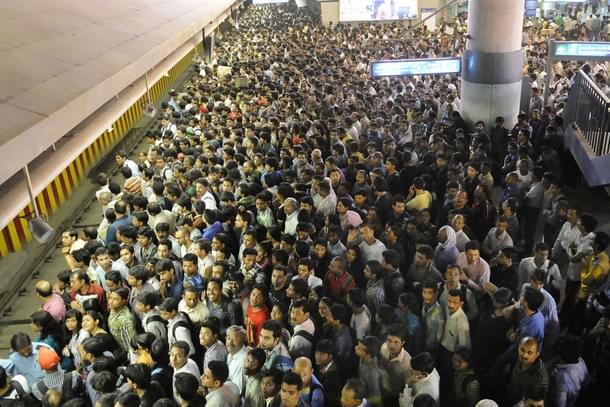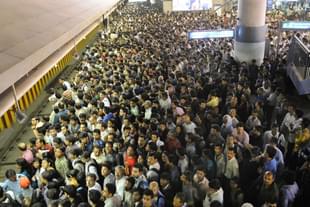News Brief
'Overcrowding Dealt With Additional Trains On Affected Sections': Delhi Metro Implements Upgrades To Manage Stampede Fears
Arjun Brij
Mar 03, 2025, 01:57 PM | Updated 01:57 PM IST
Save & read from anywhere!
Bookmark stories for easy access on any device or the Swarajya app.


The recent stampede tragedy at New Delhi Railway Station, which claimed 18 lives on 15 February, has heightened fears among Delhi Metro commuters about the dangers of overcrowding.
With passenger numbers reaching record highs, concerns are mounting that a similar disaster could unfold at the city's busiest metro stations during peak hours.
Times News Network reported that the Delhi Metro Rail Corporation (DMRC) has introduced a range of measures, including train capacity augmentation, real-time monitoring, digital booking systems, and social media updates, to effectively manage the growing concern of crowd mishap at stations.
A DMRC official highlighted the organisation’s proactive approach to TNN, stating, “As Delhi Metro’s network is expanding, passenger numbers have surged and are still increasing. DMRC monitors the footfall at stations and takes periodic steps to upgrade the infrastructure, considering future station passenger loads. We have analysed traffic patterns and implemented changes at various levels by remodelling the stations, including Chandni Chowk, Millennium City in Gurgaon, New Delhi, Kashmere Gate, Dilshad Garden and Shahdara.”
Significant infrastructure enhancements have been undertaken, including an increase in automated fare collection gates for smoother entry and exit, expansion of concourse areas, and installation of additional escalators, lifts, and travelators to facilitate faster crowd dispersal.
The official further noted improvements in signage and wayfinding systems, alongside the deployment of passenger information display systems at key locations to improve navigation within stations.
Timetable optimisation has also played a crucial role in managing peak-hour congestion. “These measures help enhance the capacity offered to passengers and also ease crowd control during peak hours. In case of any overcrowding, additional or empty trains are inducted on the affected sections,” the official explained.
The fear of an impending catastrophe is amplified by the state of other public transport options. According to a TOI report, despite the Delhi government acknowledging in 2018 that the city required 11,000 buses, only 7,600 are currently in service—many of them outdated.
Daily bus breakdowns and a lack of real-time tracking have forced more people onto the metro, further straining the system.
With passenger numbers surging—hitting an all-time high of 78.7 lakh journeys on a single day last year—Delhi Metro is trying to act swiftly to prevent a potential fear.
Arjun Brij is an Editorial Associate at Swarajya. He tweets at @arjun_brij





